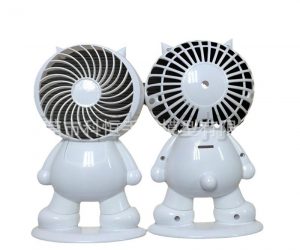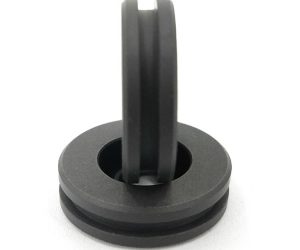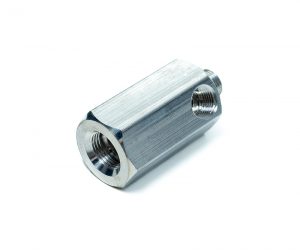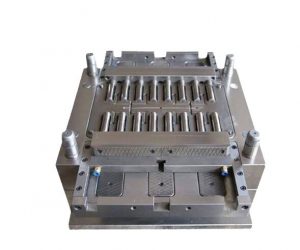we’ll explore the importance of the cleanup (purging) process during injection molding and extrusion. Purging is critical to the quality, efficiency, and consistency of plastic processing. It helps remove residual material, prevent contamination, and maintain the overall performance of the machinery. Whether in injection molding or extrusion, purging ensures that the final product meets quality standards, and helps maintain machine reliability. Let’s dive deeper into the details.
1. Introduction
In the world of plastic processing, the purging process plays a pivotal role in ensuring quality, reducing downtime, and improving operational efficiency. It involves removing leftover or residual materials from previous production runs, thereby ensuring that the machine is clean and ready for the next cycle. This guide will cover the basics of the purging process, the chemicals involved, and the role of purging in both injection molding and extrusion.
2. Understanding the Purging Process in Injection Molding
2.1 What is Purging in Injection Molding?
The purging process in injection molding refers to the cleaning of the injection molding machine after a production run. Residual plastic material, colorants, and additives from the previous batch must be removed before the machine can start processing a new batch with a different material or color. This step is essential for several reasons, including preventing contamination, avoiding defects, and ensuring the smooth operation of the machine.
2.2 Why is Purging Important in Injection Molding?
Purging ensures the following benefits:
- Prevents Color Contamination: Residual colorants from the previous production run can cause unwanted color streaks or variation in the molded part. Effective purging removes such residues.
- Reduces Defects: Streaks, spots, or burn marks can result from residual materials. A clean system reduces these risks.
- Improves Efficiency: The process minimizes downtime between runs, ensuring smoother transitions from one material or color to another, thereby increasing operational productivity.
- Increases Product Quality: Effective purging ensures that the molded parts meet the intended specifications without unexpected color shifts or defects caused by contamination.
2.3 Purging Methods
There are several purging techniques that can be used, including:
- Manual Purging: The machine is physically cleaned by operators using tools and cleaning agents to remove residue.
- Chemical Purging: Chemical purging agents are used to dissolve and flush out residual materials more effectively.
- Mechanical Purging: The screw and barrel of the injection molding machine are operated to physically push and clear residual materials.
2.4 Best Practices for Purging in Injection Molding
To maximize the effectiveness of purging, follow these best practices:
- Preheat the Machine: Preheating the machine to the optimal processing temperature ensures better flow and easier removal of residual materials.
- Choose the Right Purging Agents: Different materials require specific purging agents. For example, high-temperature polymers require different agents than standard thermoplastics.
- Follow Manufacturer Guidelines: Always adhere to the recommended purging procedures provided by the machine and material manufacturers for optimal results.
3. Chemicals Commonly Used for Purging
3.1 Chemical Purging Agents
Chemical purging agents are specialized compounds that assist in cleaning the injection molding machines and removing residual materials. These agents are available in forms such as pellets, powders, or liquids, and they dissolve or break down contaminants to ensure a clean and efficient purging process.
3.2 Three Common Chemicals for Effective Purging
- Polyethylene (PE) Purging Compound:
- Usage: This agent is widely used due to its compatibility with a variety of plastic materials. It is highly effective in removing color contamination, carbon buildup, and other residual materials.
- Acrylic Purging Compound:
- Usage: This purging agent is particularly effective for high-temperature polymers and resins. It excels at removing heat-sensitive materials that can be difficult to clean.
- Polystyrene (PS) Purging Compound:
- Usage: Suitable for general-purpose purging, it works well for cleaning the screw, barrel, and nozzle and is compatible with a wide range of plastics.
3.3 How to Use Purging Compounds
The purging process typically follows these steps:
- Step 1: Load the purging compound into the machine’s hopper.
- Step 2: Run the machine to push the purging compound through the system, allowing it to displace any residual material.
- Step 3: Continue the process until the purging compound comes out clear, signifying the machine is clean and ready for the next production run.
4. Purging in Extrusion: An Overview
While injection molding and extrusion are distinct plastic processing technologies, the need for purging remains the same: to clear residual materials and ensure smooth operation during a changeover.
4.1 Purging in Extrusion
In extrusion, purging refers to cleaning the extruder and extrusion die, ensuring that no leftover material from a previous run contaminates the new material. Just like in injection molding, the purpose of purging in extrusion is to prevent contamination, improve product quality, and maintain smooth operation.
The key difference is that the extrusion process typically involves a continuous flow of material through a die, whereas injection molding involves discrete shots of material.
4.2 The Role of Purging in Extrusion
- Preventing Material Contamination: Residual material left in the die or barrel can cause inconsistencies in the extruded product, resulting in defects or unwanted properties.
- Facilitating Material Changeover: When switching from one type of polymer to another, purging removes the previous material to ensure that the new material flows smoothly and meets the desired quality.
- Reducing Downtime: Proper purging ensures that the extrusion line can quickly and efficiently switch between materials, improving the overall efficiency of the operation.
5. Common Issues and Solutions in Purging
5.1 Common Challenges
- Incomplete Purging: Sometimes, residual material remains in the machine, leading to contamination in the next production run.
- Excessive Downtime: If the purging process is not optimized, excessive downtime can occur, affecting production schedules.
- Increased Material Waste: Poor purging techniques can lead to wasted material, as cleaning compounds or residuals are flushed out and discarded.
5.2 Solutions to Overcome Challenges
- Use the Right Purging Compound: Select a purging compound that is compatible with the materials being used. Some purging agents are more effective at breaking down stubborn residues than others.
- Optimize Purging Settings: Adjust temperature, pressure, and flow settings based on the material being purged to improve efficiency and reduce downtime.
- Monitor the Purging Process: Continuously check the material being purged to ensure that it is clear and free from contaminants. If necessary, repeat the process until the machine is fully clean.
6. Conclusion
Purging is a crucial step in both injection molding and extrusion processes. It ensures that the equipment is free of contaminants, reducing the chances of defects and ensuring the highest quality in the finished product. By using the right purging agents, following best practices, and addressing common challenges, manufacturers can achieve more efficient, high-quality production runs with fewer downtimes and waste.
Understanding and optimizing the purging process is essential for achieving excellence in plastic processing and delivering consistent, high-quality products.
7. Frequently Asked Questions (FAQs)
7.1 What is the purging process of injection molding?
The purging process in injection molding involves cleaning the machine and removing any residual material or colorants that remain in the machine after a production run. The machine is flushed with a purging compound or new material to ensure that contaminants are cleared before beginning a new production cycle.
7.2 What is purging in plastic processing?
Purging in plastic processing is the cleaning process of machinery, such as injection molding machines or extruders, to remove residual materials or contaminants. It helps ensure smooth material changeover, prevents contamination, and maintains product quality.
7.3 What is purging in extrusion?
Purging in extrusion is the process of cleaning the extruder and die to remove any leftover material from the previous production run. This helps avoid contamination, ensure smooth operation, and maintain the quality of the extruded product. It is done by feeding a purging compound through the system to clear any residual material.




